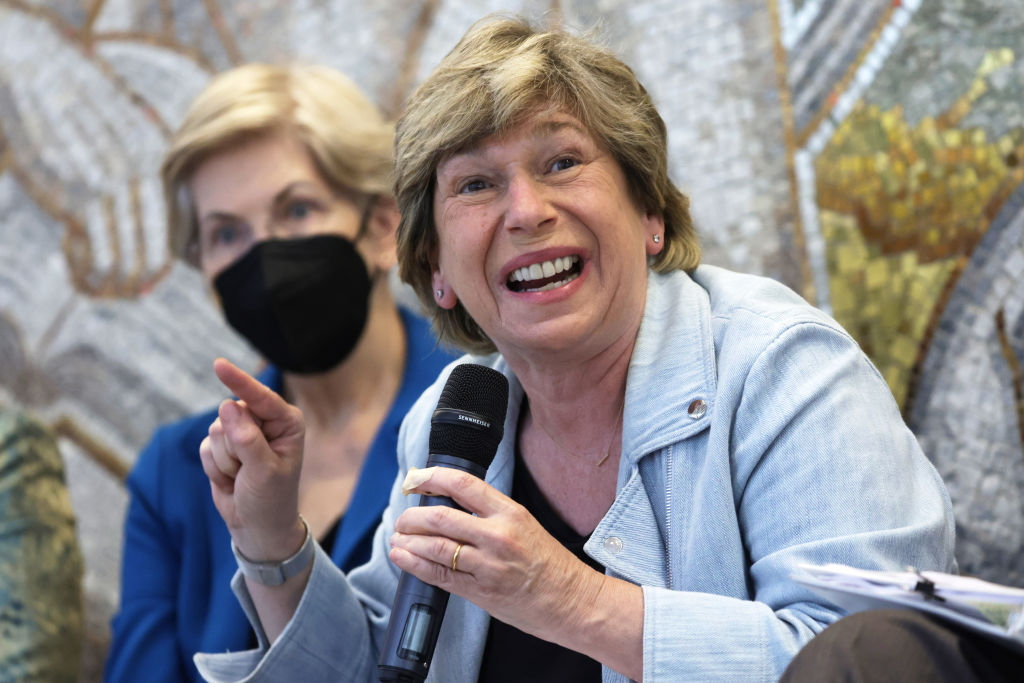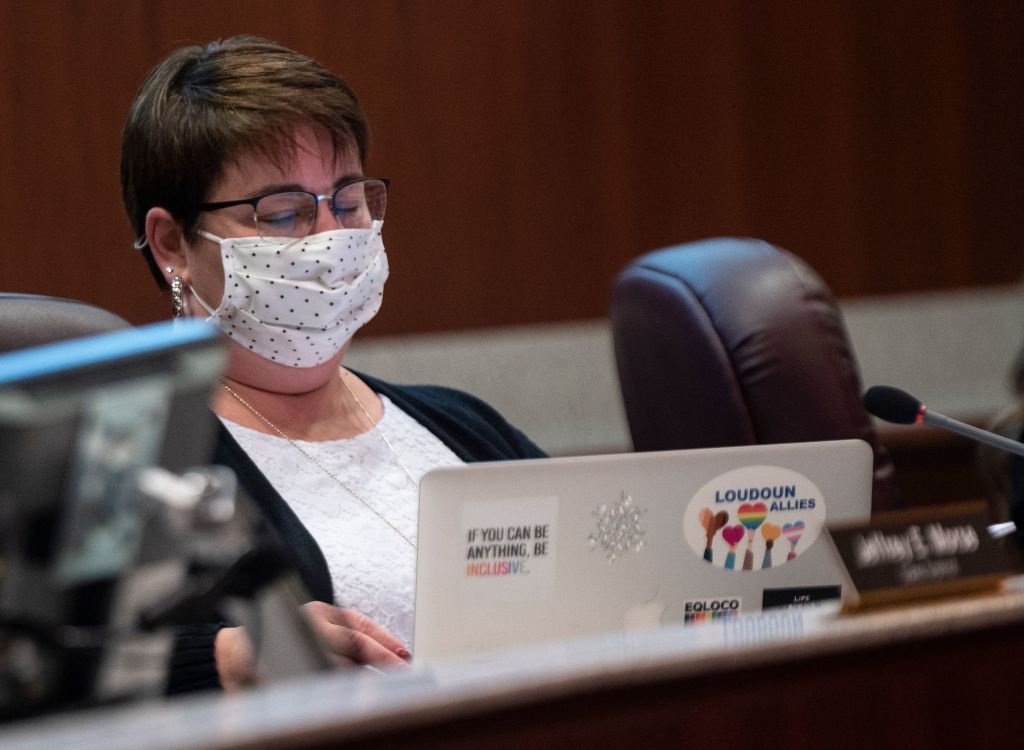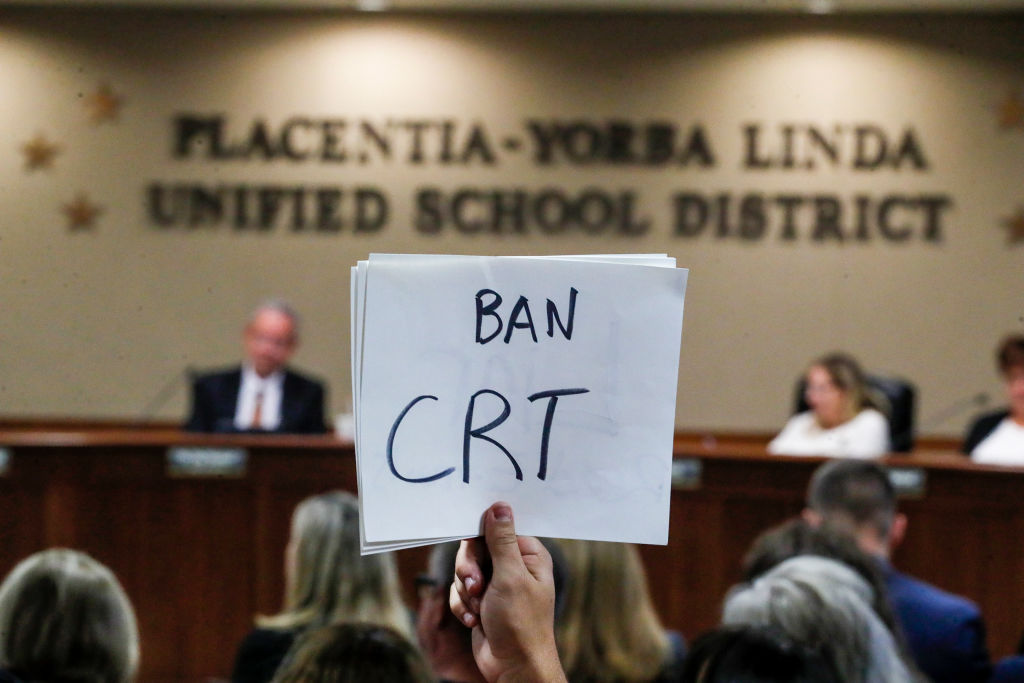This is the Right’s greatest opportunity in decades. Will we take it?
Uprooting the Teachers Unions

Education reform demands radical measures.
Across the country, teacher union leaders and leftist pundits frequently malign educational choice expansion as an insidious plot to “dismantle public education” or “destroy traditional public schools.” They also claim any criticism of teacher union politics is “anti-educator.”
Unfortunately, some right-leaning education reformers have bought into these strawman arguments. Robert Pondiscio, a senior fellow at the American Enterprise Institute, has written that school choice activists erred in “making enemies of public school teachers” and, in a longer piece, argues conservatives should not “abandon” public schools.
While calls to engage with public schools are on point, these characterizations misstate the intent of reformers and fail to identify the obstacles and solutions for improving education for all students.
Unless we empower parents with educational choice and strike at the root of the problem—government union influence—efforts to reform the public school system will fail.
The idea that conservative critics of the public school systems are attacking public school teachers is an absurdity propagated by teacher union executives, who distort the conservative position and then argue against it.
In truth, conservative reformers are on the side of teachers. What could be more pro-teacher than demonstrating how teachers can benefit from school choice, would benefit from public pension reform, and can reclaim their legal rights?
Empowering parents is a prerequisite to reform.
The notion that “school choice isn’t a panacea” is a cliché. No one claims that school choice is the exclusive solution to any and all problems in education. Educational choice is a means to help improve public education—as many studies have shown the connection between expanding educational choice and public school gains.
Pondiscio doesn’t define what he means by school choice, arguing that conservatives should stop focusing on school choice and embrace charter schools—as though charter schools are not a primary instance of school choice. Pondiscio recognizes that charters are typically non-unionized yet neglects to note that teacher unions are simultaneously trying to unionize charter schools and lobbying to defund or close existing charter schools, while enforcing stringent caps to limit their availability.
While it is accurate to say that “most students will be educated in public schools,” this ignores the numerous educational options within the public -school sector—including charter schools, magnet schools, career and technical schools, and interdistrict choice. The often-repeated claim that public schools educate “90 percent” of students is a gross exaggeration; in actuality, fewer than 70 percent of students attend their assigned district schools.
Indeed, the most prevalent form of school choice is “choice by mortgage.” All families exercise choice by deciding where to live based on the quality and safety of the local public schools. That is why wealthier families have always enjoyed school choice.
Indeed, the school choice movement is not about favoring one type of school over another, but about empowering all parents—not just those with the means—to choose the best educational opportunity for their kids. Parental empowerment is a critical prerequisite to engaging with and reforming public schools.
Efforts to reform public schools from a top-down approach—from A Nation at Risk, to “No Child Left Behind,” to the “Every Child Succeeds Act,” to Common Core, to teacher evaluation systems and incentive pay pushed by major foundations—have all failed to improve the nation’s education system, while millions of children have paid the price.
In fact, these education reform efforts have all been undermined from within the system and then abandoned. Teacher unions have worked to undermine the use of standardized tests, which were critical to measurement and evaluation under No Child Left Behind, while criticizing and eventually eliminating teacher evaluation and merit pay programs that they once supported.
Whatever the reform, opposition from the public school establishment, and union leadership in particular, makes it difficult to reform public schools, at least so long as the system remains a centralized monopoly.
End the special privileges of government unions.
While reformers recognize the problem union leaders present, they rarely try to change incentives or special legal privileges that the unions enjoy. Pondiscio writes, “Debates over education, however, tend to be driven by union leaders, political advocates, faculty at colleges of education, and philanthropic funders, all of whom are a deeper shade of blue than the teachers they represent or seek to influence.”
But ending the special privileges of government unions is crucial to making real education reform possible.
Simply having a few parents show up to school board meetings does nothing to address the disconnect between the priorities of union executives and those of teachers. Nor does it diminish the inordinate influence of teacher union executives who not only drive education policy but also have an undue role in American politics.
Even as the major teacher unions—the National Education Association (NEA) and American Federation of Teachers (AFT)—have lost members, they have doubled down on political spending. These two unions spent more than $54 million on federal elections from 2021 to 2022. On top of that, the two reported spending $77.3 million of members’ dues on “political activities and lobbying” during the same period.
More than 95 percent of NEA and AFT campaign contributions favor Democrats. This lopsided support goes well beyond mere campaign contributions. NEA and AFT union dues fund a wide variety of progressive advocacy and political organizations—including entities like the Democracy Alliance, Sixteen Thirty Fund, Center for American Progress, Economic Policy Institute, National Democratic Redistricting Commission, and Priorities USA—with more dues going towards politics than representation. In my home state of Pennsylvania, the largest teacher union, the Pennsylvania State Education Association (PSEA), not only spends millions in campaign contributions (favoring Democrats) but also set up its own political arm to filter millions to the Democratic Governors Association.
Indeed, teacher union executives push much of the progressive ideology underlying culture-war disputes in public schools. Despite denying that Critical Race Theory (CRT) is taught in public schools, the NEA and AFT promote CRT and fund organizations that do the same. They’ve even set aside funds to conduct “opposition research” into groups that oppose CRT. The PSEA hosted a training about why “Nice White Parents” are the problem with public schools.
Additionally, teacher unions promote gender identity curricula; advocate for “social and emotional learning” curricula; and oppose legislation to provide transparency to parents regarding sexual content taught to elementary school children. These are far from the views of the average public school teacher, whose values align more with the values of the nation as a whole. So how can union executives get away with pushing such a radical, progressive agenda?
The answer lies in state laws that give government union leaders power over teachers and other public sector workers.
The U.S. Supreme Court’s 2018 Janus v. AFSCME decision declared that public employees could not be forced to pay into a union as a condition of employment. The decision freed tens of thousands of teachers from coercive dues schemes, but it did nothing to alter the broader labor landscape. Union leaders still enjoy special legal privileges and continue to undermine teachers who attempt to exercise their free association rights.
Union executives intimidate and threaten teachers who decline union membership or leave the union. An estimated 52 percent of teachers are unaware of their right to refrain from union membership. Passing legislation that notifies teachers of their rights under Janus would enable them to stand strong in the face of union undue aggressions, but labor executives have fought against legislation and other programs designed to inform teachers of their constitutional rights.
Most states also have limited resignation windows, making it difficult for teachers to resign from their union. In Pennsylvania, resignation is limited to a 15-day window at the end of a union contract period, regardless of contract length. For union executives, this arrangement is desirable because it ensures members cannot quit the union when they want. Unions can continue to count on due payments, and union executives have little to no accountability for choices made as union leaders.
That explains why union lobbyists oppose any efforts to notify public employees of their right to leave the union, even during prescribed windows. Legislation permitting teachers to resign their union membership at any time, or which insists on notifying teachers of upcoming resignation windows, would help prevent unwanted union membership—and may also serve to make unions more responsive to members.
Currently, rank-and-file public employees have few opportunities to hold their union executives accountable. Few states permit regular reelection of unions—most teachers across the nation never voted to be represented by the NEA or AFT. But if they want to teach, they must accept representation, as state laws give monopoly bargaining rights to these unions.
Making unions stand for regular recertification elections would change that dynamic. Additionally, unions hold monopoly bargaining rights through exclusive representation, meaning that the union bargains on behalf of non-members. Ending exclusive representation and allowing for independent bargaining between individuals and their employer ensures employees are not represented by a union they do not like.
Finally, union dues and even campaign contributions are collected at taxpayer expenses using public payroll systems. Teachers never see this money, as it is deducted at source from their paychecks, and many don’t even realize how much is taken out, how union leadership spends that political money, or what recourse they have to keep more money in their paycheck.
Currently, 11 states have full or partial paycheck protection, which prevents using government payroll systems to collect union dues or union political action committee (PAC) deductions. Paycheck protection legislation has recently been signed into law in Florida and Arkansas.
It will be impossible to succeed in “efforts to improve public education” without changing the incentives for the public school establishment by striking at the root of the problem: the special privilege and undue influence of public school union executives. Empowering parents with educational choice and adopting policy reforms to curtail the abuses of union executives would pave the way for public school reforms, protect teachers from exploitation, and ensure students have access to an excellent education.
The American Mind presents a range of perspectives. Views are writers’ own and do not necessarily represent those of The Claremont Institute.
The American Mind is a publication of the Claremont Institute, a non-profit 501(c)(3) organization, dedicated to restoring the principles of the American Founding to their rightful, preeminent authority in our national life. Interested in supporting our work? Gifts to the Claremont Institute are tax-deductible.
Associations of school boards are the latest example of administrative power gone mad.
Further steps to take in getting politics out of our schools
Training policy personnel is crucial in mounting a counter-offensive.




